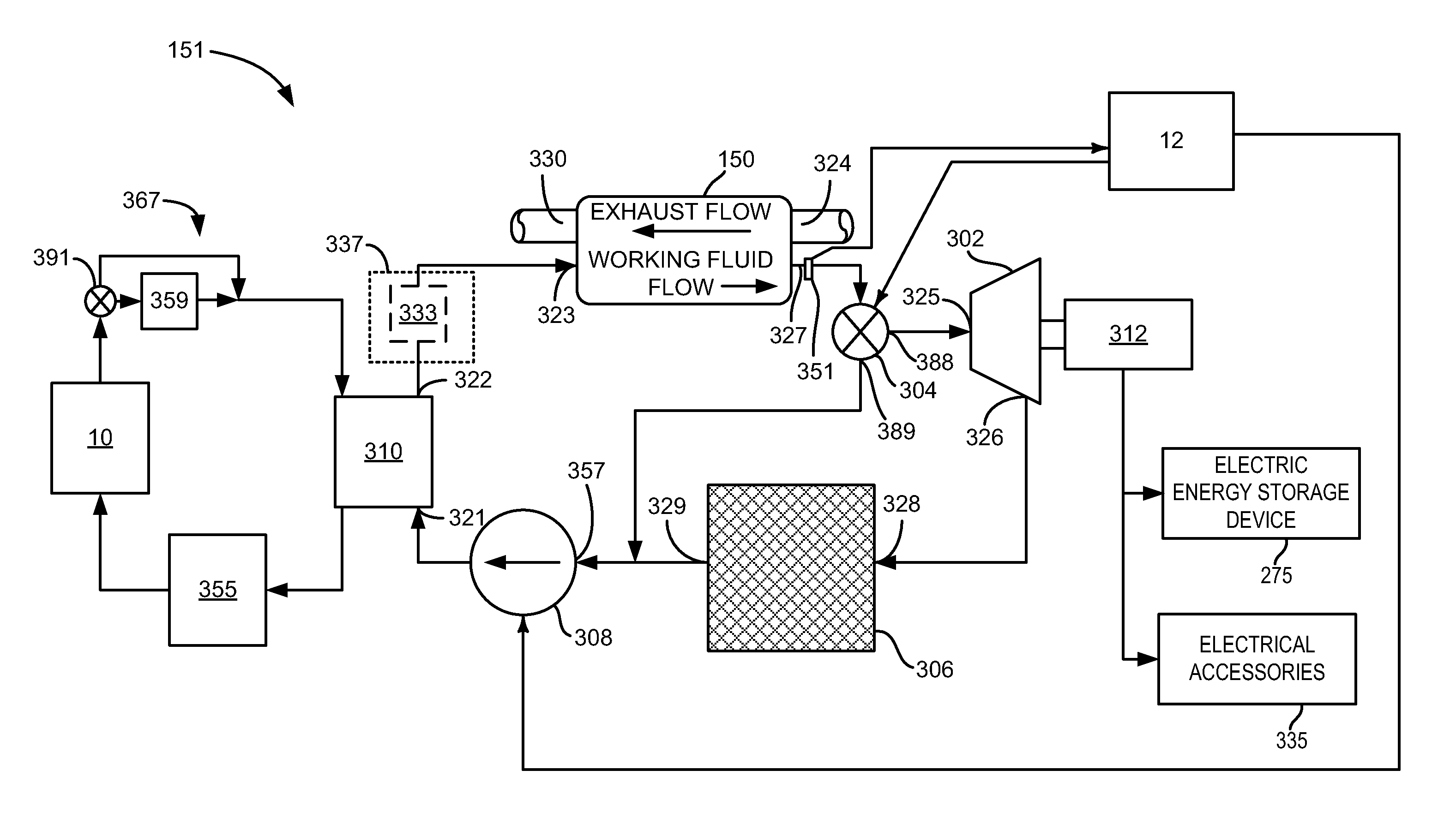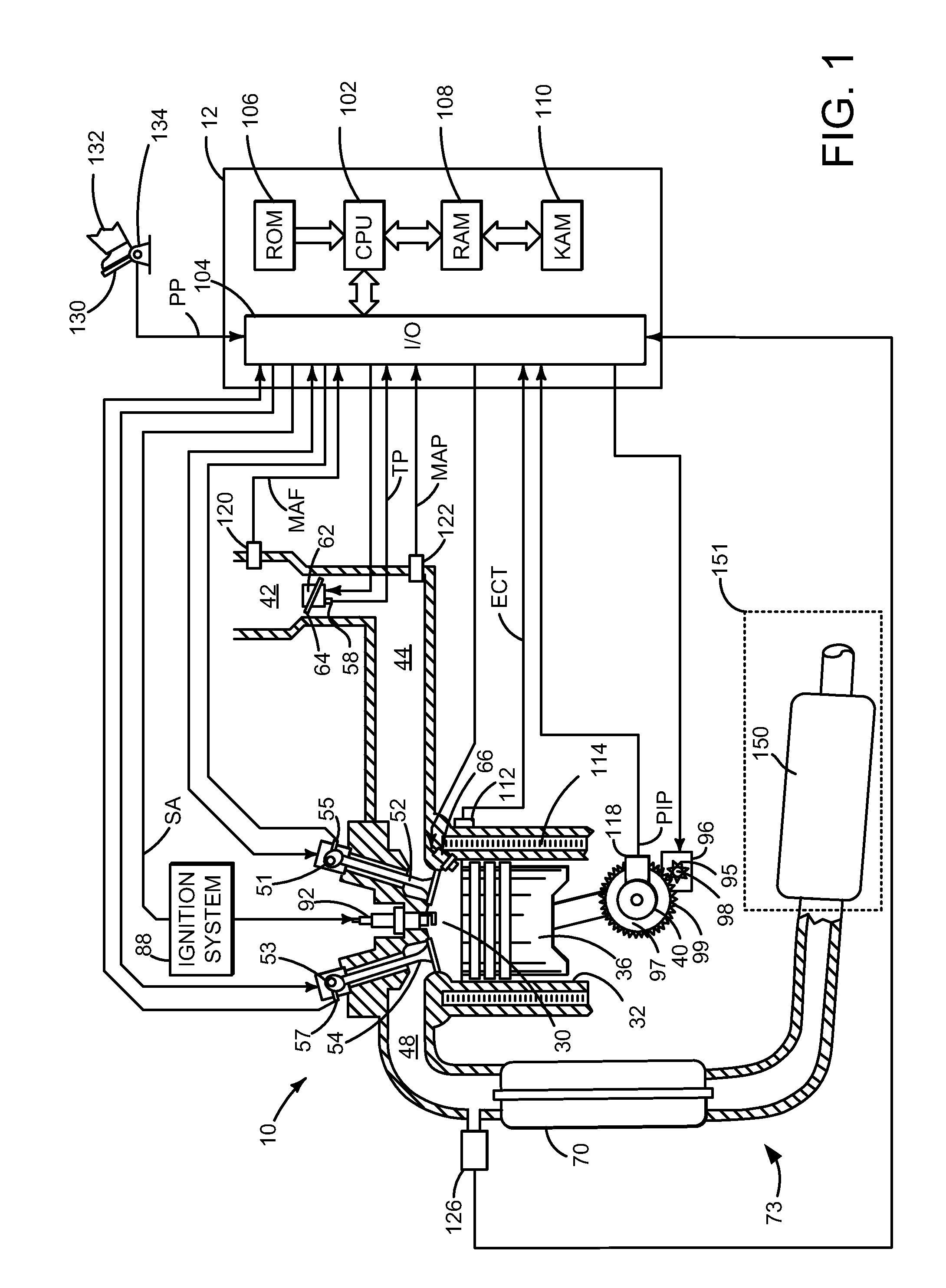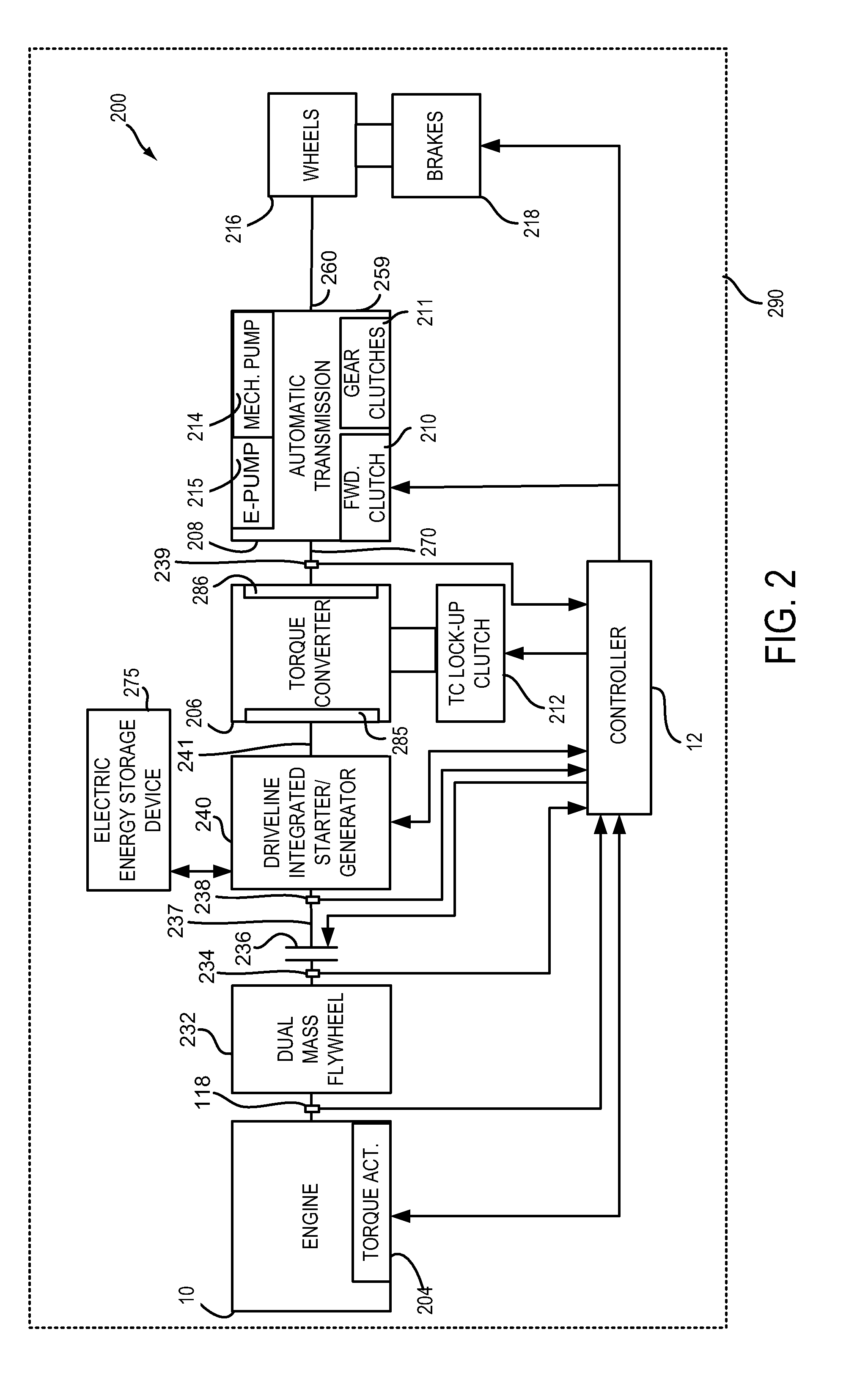Methods and systems for hybrid vehicle waste heat recovery
a hybrid vehicle and waste heat recovery technology, applied in the direction of machines/engines, mechanical equipment, transportation and packaging, etc., can solve the problems of engine emissions and fuel economy depletion, not always beneficial to extract heat from the engine to produce electricity, and engine heat extraction may not be desirable, so as to improve engine fuel economy and emissions, improve engine warm-up, and generate electricity
- Summary
- Abstract
- Description
- Claims
- Application Information
AI Technical Summary
Benefits of technology
Problems solved by technology
Method used
Image
Examples
Embodiment Construction
[0014]The present description is related to recovering energy from engine exhaust gases and using the recovered energy to improve vehicle operation. Exhaust gas energy may be recovered from an engine of the type described in FIG. 1, or a diesel engine. The engine may be part of a hybrid vehicle as is shown in FIG. 2. Energy may be extracted from engine exhaust gases via an exhaust gas energy recovery system as is shown in FIG. 3. The exhaust gas energy recovery system may be operated according to the method described by the flowchart shown in FIG. 4. The engine and exhaust gas heat recovery system may be operated in a sequence as shown in the sequence of FIG. 5.
[0015]Referring to FIG. 1, internal combustion engine 10, comprising a plurality of cylinders, one cylinder of which is shown in FIG. 1, is controlled by electronic engine controller 12. Engine 10 includes combustion chamber 30 and cylinder walls 32 with piston 36 positioned therein and connected to crankshaft 40. Flywheel 97...
PUM
 Login to View More
Login to View More Abstract
Description
Claims
Application Information
 Login to View More
Login to View More - R&D
- Intellectual Property
- Life Sciences
- Materials
- Tech Scout
- Unparalleled Data Quality
- Higher Quality Content
- 60% Fewer Hallucinations
Browse by: Latest US Patents, China's latest patents, Technical Efficacy Thesaurus, Application Domain, Technology Topic, Popular Technical Reports.
© 2025 PatSnap. All rights reserved.Legal|Privacy policy|Modern Slavery Act Transparency Statement|Sitemap|About US| Contact US: help@patsnap.com



